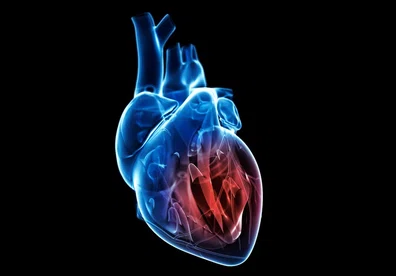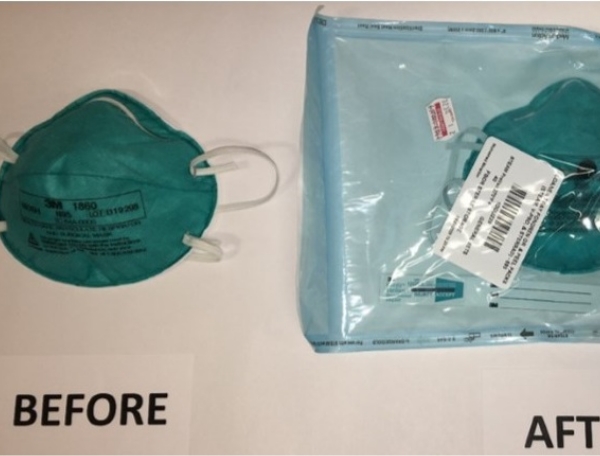


clinical research
Pushing the Envelope of Heart Disease Management
Pushing the Envelope of Heart Disease Management

Heart diseases are a leading cause of death in the United States, but a new technique developed by Miguel Valderrábano, MD, FACC, Lois and Carl Davis Centennial Chair I, DeBakey Heart & Vascular Center, Program Director of the Clinical Cardiac Electrophysiology Fellowship and Professor of Cardiology could provide effective substrate ablation over a broad range of ventricular locations.
Valderrábano has performed venous ethanol ablation (VEA) via a multi-balloon, multi-vein approach in 44 patients with ablation-refractory ventricular tachycardia (VT). He determined that this methodology can provide effective substrate ablation over a broad range of ventricular locations.
Structural heart disease (SHD) is a heart condition that arises from abnormalities in the structure of the heart and may include valves, walls, chambers or heart muscles. This condition can be congenital or caused by wear and tear or comorbidities. Patients suffering from SHD are at risk for VT—a type of arrhythmia in which the lower chambers of the heart pump blood much faster than normal, leading to heartbeats of over 100 a minute.

Miguel Valderrábano, MD, FACC
Treatment options for VT include antiarrhythmic drugs, transcatheter radiofrequency ablation and implantable cardioverter-defibrillator therapy. Although these approaches are successful in some cases, sub-optimal results are frequent. One major challenge of radiofrequency ablation is VT recurrence.
In this study, the injected veins included the entire range of left ventricular locations. The technique entailed procedures including endocardial mapping, epicardial mapping, ablation, coronary venous mapping, venous ethanol infusion and intracardiac echocardiography. Notably, at a one-year follow-up, VT recurrence was avoided in 84% of patients. This approach also led to a substantial reduction in antiarrhythmic therapy requirements and VT episodes.

The venous circulation is a rich vasculature reaching the entire left ventricular myocardium, is easily accessible via the coronary sinus using routine cannulation techniques and is free of atherosclerotic disease. We have developed an approach to target ablation-refractory ventricular tachycardia via ethanol delivery in the coronary veins that provide venous return from arrhythmogenic sites. In doing so, we adapted the technique for large substrate ablation using double-balloon techniques that allow for the sequential injection of ethanol along an epicardial vein to achieve large substrate ablation. Through this study, we validate the safety and efficacy of the venous ethanol ablation approach for large substrate ventricular tachycardia ablation.

Miguel Valderrábano, MD, FACC
Lois and Carl Davis Centennial Chair I, DeBakey Heart & Vascular Center Program Director of the Clinical Cardiac Electrophysiology Fellowship and Professor of Cardiology
Most sudden cardiac deaths in the U.S. are caused by VT or ventricular fibrillation (VF). Refractory VT is a life-threatening condition. Also known as an “electrical storm,” refractory VT refers to the condition in which two or more VT or VF episodes occur within 24 hours.
“The venous circulation is a rich vasculature reaching the entire left ventricular myocardium, is easily accessible via the coronary sinus using routine cannulation techniques and is free of atherosclerotic disease. We have developed an approach to target ablation-refractory ventricular tachycardia via ethanol delivery in the coronary veins that provide venous return from arrhythmogenic sites. In doing so, we adapted the technique for large substrate ablation using double-balloon techniques that allow for the sequential injection of ethanol along an epicardial vein to achieve large substrate ablation. Through this study, we validate the safety and efficacy of the venous ethanol ablation approach for large substrate ventricular tachycardia ablation,” said
Dr. Valderrábano.
His research efforts are focused on developing more effective treatments for atrial fibrillation, including epicardial mapping and ablation. In this study, Dr. Valderrábano provided evidence with a large data set and described details of the multi-balloon, multi-vein VEA technique. Furthermore, his methodology offers several advantages over alternative treatment options, including low cost, simplicity, technical availability and rapid ablative efficacy. In the future, this technique could be used for VT management upon validation with larger, randomized studies.
Miguel Valderrábano, Stephanie C Fuentes Rojas, Adi Lador, Apoor Patel, Paul A Schurmann, Carlos Tapias, Diego Rodríguez, Luis Carlos Sáenz, Maan Malahfji, Dipan J Shah, Nilesh Mathuria, Amish S Dave. Substrate Ablation by Multivein, Multiballoon Coronary Venous Ethanol for Refractory Ventricular Tachycardia in Structural Heart Disease. Circulation. 2022 Nov 29;146(22):1644-1656. doi: 10.1161/CIRCULATIONAHA.122.060882.
This work is supported by the Charles Burnett III and Lois and Carl Davis Centennial Chair endowments (Houston, TX) and National Institutes of Health/National Heart, Lung, and Blood Institute R01 HL115003 (to Dr. Valderrábano).
Abanti Chattopadhyay, PhD
June 2024







